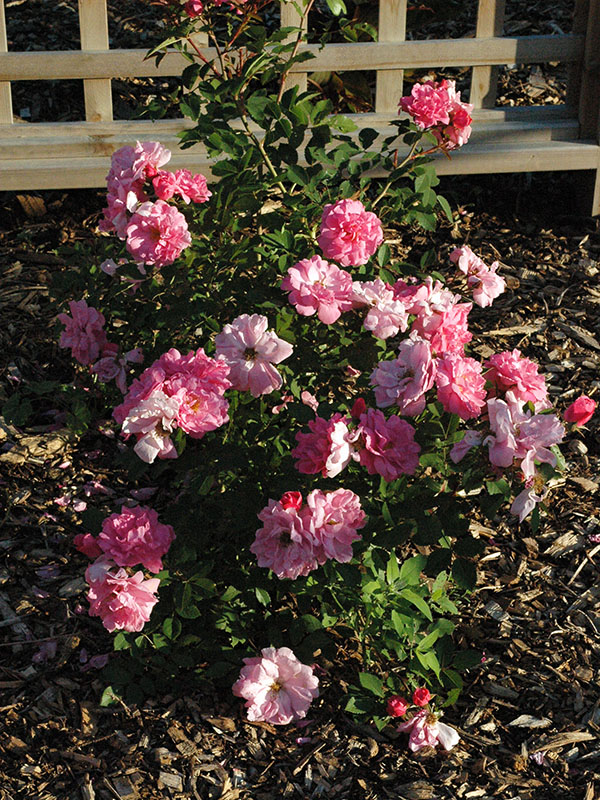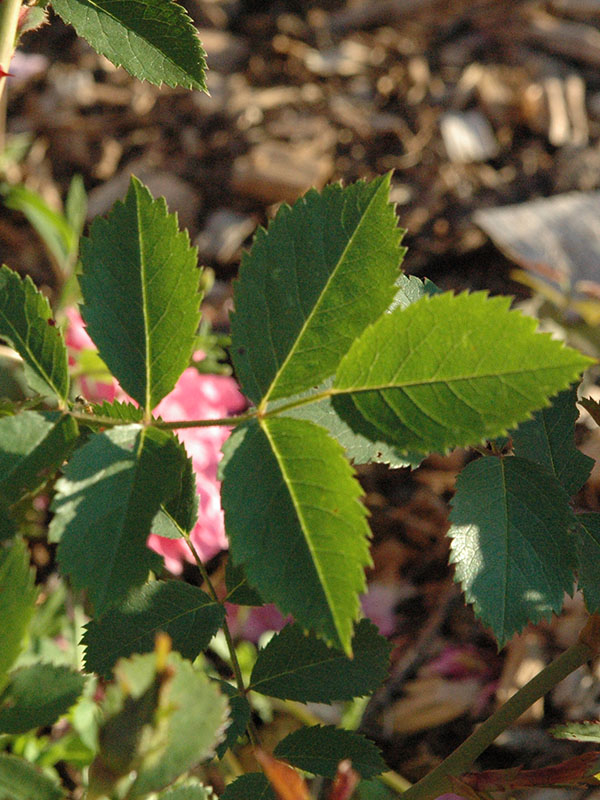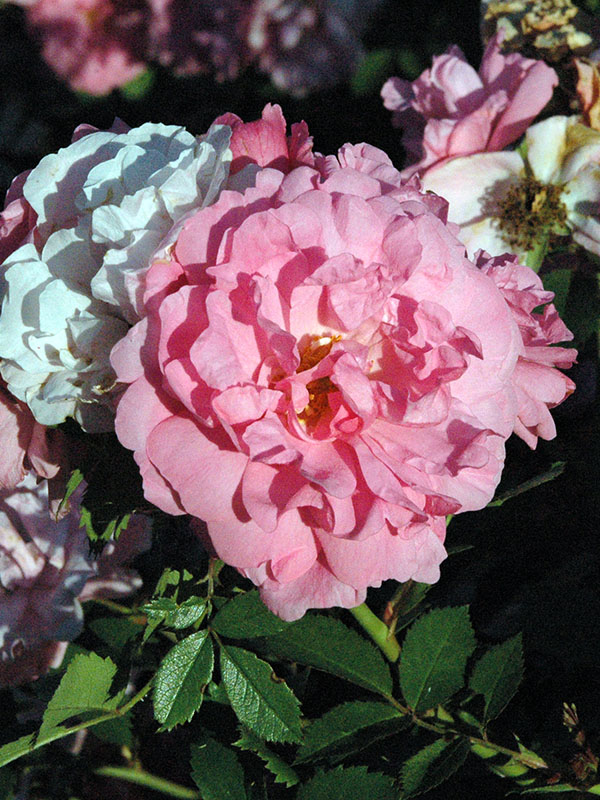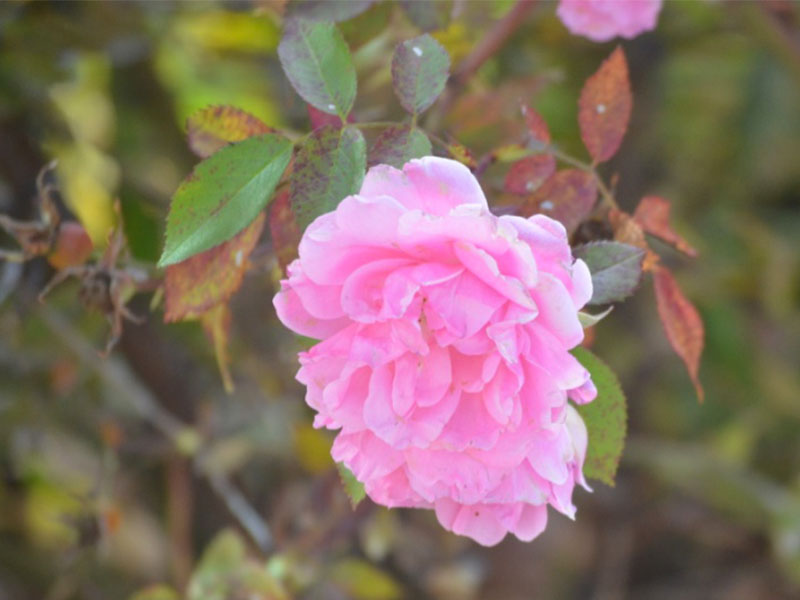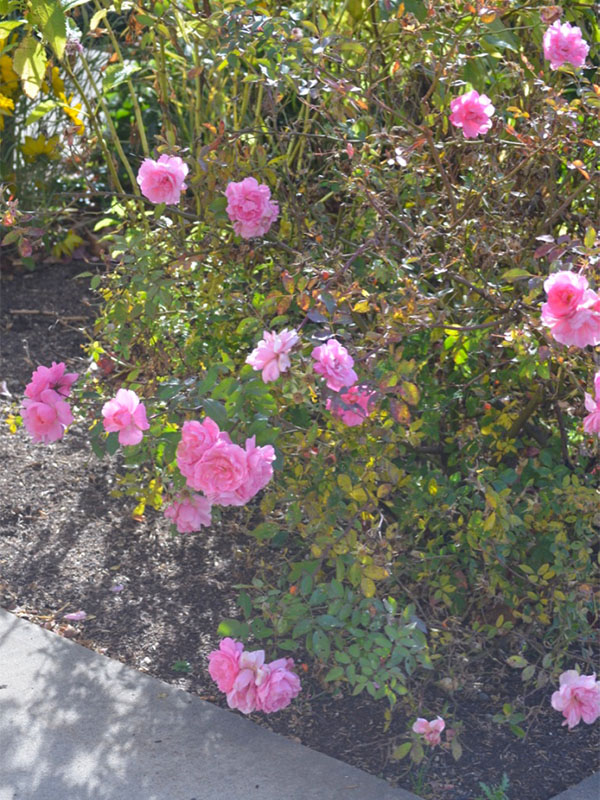
Woody > Rosa > Rosa 'John Davis'
Rosa
'John Davis'
John Davis Rose
Origin: A Canadian Explorer series rose introduced in 1986 resulting from a cross between R. kordesii and line originating from a cross between the cultivars 'Red Dawn' and 'Suzanne'.
| Family |
| Rosaceae |
| Genus |
| Rosa |
| Cultivar |
| 'John Davis' |
| Category |
| Woody |
| Type |
| Shrub (deciduous) |
| Pronunciation |
| USDA Hardiness Zone |
| 3a |
| Canadian Hardiness Zone |
| 3 |
| RHS Hardiness Zone |
| H7 - H2 |
| Temperature (°C) |
| -40 |
| Temperature (°F) |
| -40 |
| Height |
| 2 - 2.5 m |
| Spread |
| 0.8 - 1.2 m |
Photographs
Description and Growing Information
Flowering Period
| Landscape |
| Borders, hedges, climbers, rock garden, flower beds, containers, cut flowers, can accommodate almost any garden need. |
| Cultivation |
| Grow in full sun in moist but well-drained soil. Suckers should be removed annually. |
| Shape |
| Compact-rounded spreading. |
| Growth |
| Medium |
| Pests |
| Aphids, leafhoppers, spider mites, scale insects, caterpillars, mildew, dieback, canker, viruses, rust and rose slugs. Somewhat resistant to blackspot and powdery mildew. |
| Habitat |
| Horticultural origin. |
| Bark/Stem Description |
| Smooth, semi-glossy robust woody stems with small characteristic rose spines/thorns. |
| Leaf Description |
| Semi-glossy, highly serrated, elliptic-pinnate leaves. |
| Flower Description |
| Up to 17 8 - 9 cm medium pink flowers per cluster with an average of 40 petals per bloom. Often quartered, similar in form to many old-fashioned roses. |
| Colour Description |
| Showy rosy pink to dark pink blooms, medium green foliage, showy reddish-orange rosehip fruits and brownish-green bark with reddish-brown spines/thorns. |
| Texture Description |
| Medium to spiny. |
| Notable Specimens |
| The Devonian Botanic Garden, Devon, Alberta, Canada. The Ottawa Experimental Farm, Ottawa, Ontario, Canada. The A.M. Cuddy Gardens, Strathroy, Ontario, Canada. Olds College, Olds, Alberta, Canada. |
